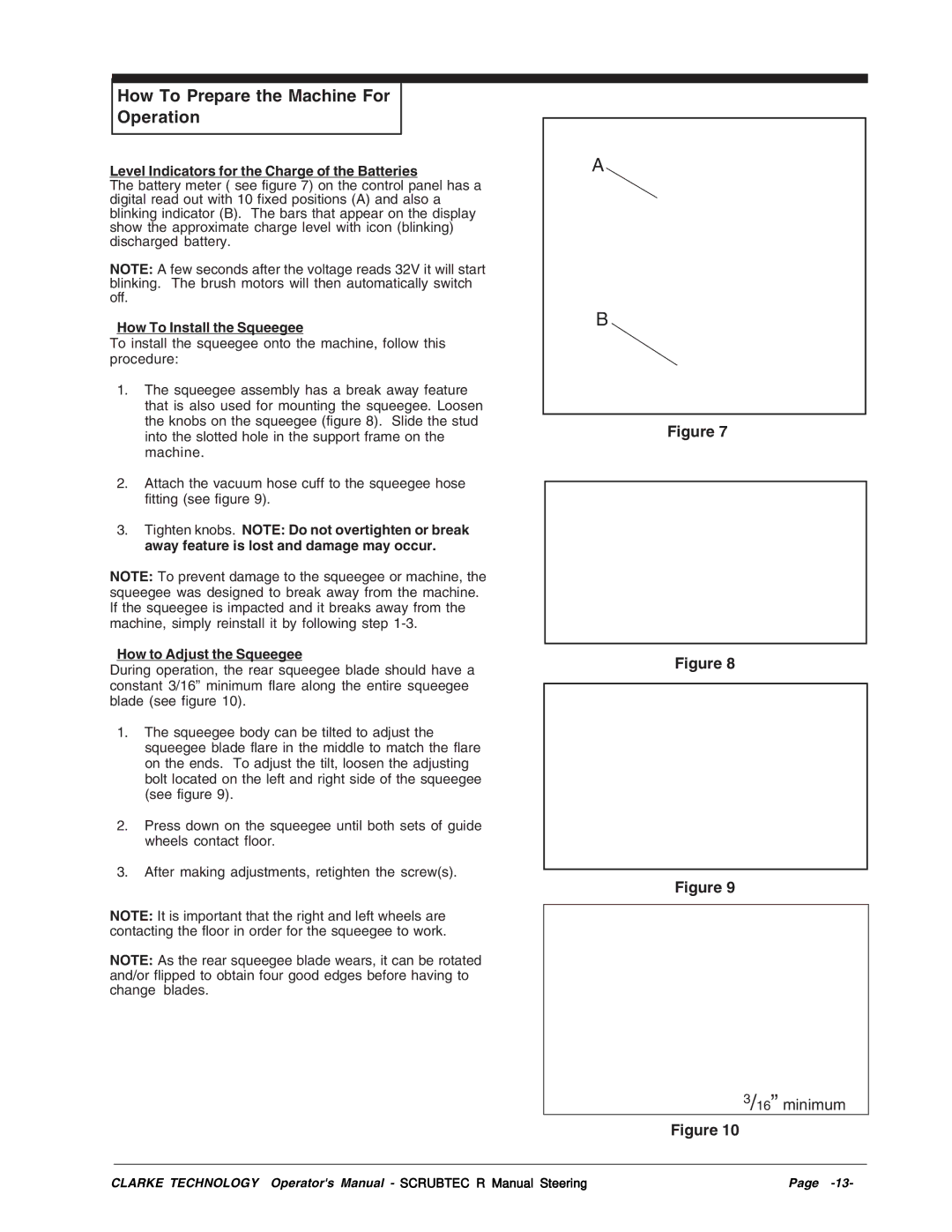BOOST R, R 571, R 586, 571 C, SCRUBTEC R 571 specifications
Nilfisk-ALTO has long been recognized for its commitment to delivering high-quality cleaning solutions, and the Nilfisk-ALTO 586, 571, R 571 C, SCRUBTEC R 586, and SCRUBTEC R 571 models exemplify this dedication. These compact and efficient scrubbers are designed for effective cleaning in various environments, making them suitable for both industrial and commercial applications.The Nilfisk-ALTO 586 and SCRUBTEC R 586 models feature advanced scrubbing technology, providing users with exceptional cleaning results. They are equipped with a highly efficient brush system that can adapt to different floor surfaces, ensuring optimal cleaning performance whether in retail spaces, warehouses, or manufacturing facilities. The unique brush design simplifies the replacement process, allowing operators to switch brushes quickly and easily.
Among their key characteristics is the ability to adjust the water flow and detergent dose to suit the specific cleaning requirements. This contributes to sustainability, as it minimizes water and detergent waste while maximizing cleaning efficacy. Additionally, their ergonomic design promotes user comfort during operation, reducing fatigue during extended cleaning tasks.
The SCRUBTEC R 571 and R 571 C models bring technological advancements, including a patented electronic control system that manages all aspects of the cleaning process. This system allows users to monitor performance metrics in real-time, providing valuable insights into efficiency and usage patterns. Integrated with a large capacity solution tank, these machines can sustain longer cleaning cycles without frequent refills, making them ideal for larger areas.
Another notable feature is the ultra-compact design of these models, which facilitates maneuverability in tight spaces. Their low profile and slim design allow operators to access hard-to-reach areas, ensuring comprehensive cleaning results. Furthermore, the machines are equipped with advanced noise reduction technology, making them suitable for use in noise-sensitive environments.
Overall, the Nilfisk-ALTO 586, 571, R 571 C, SCRUBTEC R 586, and SCRUBTEC R 571 smoothie’s state-of-the-art features and technologies offer exceptional cleaning efficiency. Their operational flexibility, coupled with user-friendly controls, positions them as an ideal choice for businesses looking to invest in reliable and effective floor cleaning solutions. With Nilfisk-ALTO, users can count on superior performance and durability built into every model.

